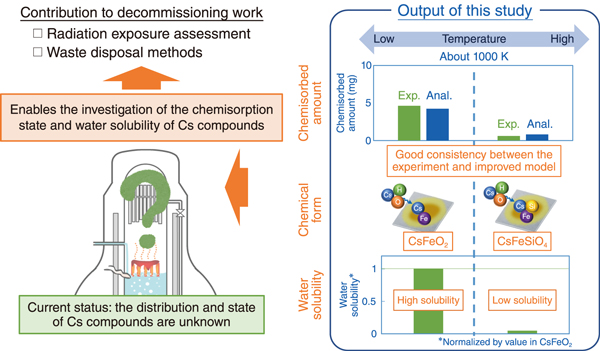
Fig.1 Information obtained by improving the severe accident (SA) analysis code in this study: the amount, chemical form, and water solubility of Cs compounds chemisorbed onto stainless steel (SS)
The radioactive cesium (Cs) compounds remaining in the reactors and reactor buildings are expected to leach into water during future decommissioning work and flooding of buildings in preparation for fuel debris retrieval at TEPCO’s Fukushima Daiichi Nuclear Power Station (FDNPS). Therefore, if the Cs distribution and the water solubility of its compounds can be predicted, adequate safety measures for radiation exposure and planning of waste disposal in FDNPS can be implemented. For example, Cs compounds chemisorbed on structural materials may remain as a chemically stable radiation source that is insoluble in water. However, the mechanism of the chemisorption of Cs and the type of compounds it forms remained unknown. Furthermore, such chemistry could not be considered in the existing severe accident (SA) analysis code. These challenges made it to be difficult to investigate the state and water solubility of the Cs compounds deposited in FDNPS.
We conducted reaction tests between Cs vapor and stainless steel (SS), which is the major structural material of the reactor pressure vessel, at 873-1273 K. In addition, high-purity samples of the reaction products were prepared, and tests were conducted to study leaching in water. We clarified that the Cs compounds formed by chemisorption onto SS are mainly CsFeSiO4 with low water solubility above 1000 K and CsFeO2 with high water solubility below 1000 K (Fig.1).
Based on these results, we improved the model of Cs chemisorption onto SS and implemented the improved model into the existing SA analysis code SAMPSON, which aims to analyze the Cs behavior in the reactor and reactor building in a SA. We analyzed the results of the Cs chemisorption test, using the improved SAMPSON for a large-scale setup. The setup comprised 13 tubular furnaces simulating Cs transportation in the reactor pressure vessel in a SA with the temperature decreasing from 1300 K to 400 K. We confirmed that the improved SAMPSON can reproduce experimental results of changes in the amount of chemisorption and the compounds formed (Fig.1).
Thus, the improved SAMPSON can investigate the state of Cs compounds chemisorbed on SS in FDNPS and their water solubility.
The implementation of the improved model to SAMPSON was conducted in a collaborative study with the Institute of Applied Energy.
(Shuhei Miwa)